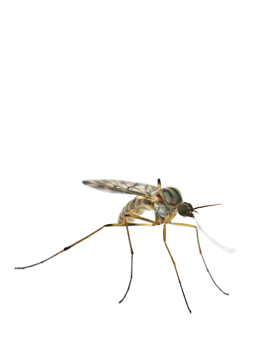
Mosquito Control In Philadelphia
Commercial And Residential Mosquito Control
Evans Pest Control Provides Effective Treatment For The Elimination Of Mosquitoes
How To Get Relief From Mosquitoes
Mosquitoes are well known by most people because of their pesky biting habit. Of greater concern, they are very important as vectors of numerous human diseases such as West Nile virus, malaria, yellow fever, filariasis, dengue, and encephalitis. Mosquitoes are distributed throughout the world, including the United States.
Apply repellent, then re-apply often. A lotion or spray containing DEET (it's safe, even for kids, when used as directed), picaridin, IR3535 or oil of lemon or eucalyptus is your best bet for keeping mosquitoes away, but it will wear off after a certain number of hours, depending on the formula
Mosquito Habits
Mosquitoes have adapted to almost every kind of aquatic situation such as permanent ponds and marshes, temporary flood waters or woodland pools, drainage ditches, and water contained in tree holes, leaves of plants, or artificial containers. The exceptions are flowing streams and the open waters of large streams, rivers, lakes, seas, and oceans. The number of generations per year ranges from 1 where the eggs require cold before hatching (e.g. some Anopheles), to many in warm climates where most breed continuously.
The larvae of most species feed on small aquatic organisms and organic debris which they strain out of the water with a series of oral brushes. Although quite active, the pupae do not feed. The adult males feed on nectar. Although the adult female also feeds on nectar, females of most species require a blood meal before they can lay fertile eggs. Females require 2+ days to digest a blood meal, lay a batch of eggs, and then seek another blood meal.
The flight range of mosquitoes varies with the species, temperature, wind direction, time of year, and distance to blood meal sources. For various species of Aedes and Ochlerotatus (for 7 species formerly in Aedes, see table page 3.18.5), the range for recaptured marked females was from 18 mi (29 km) along coastal Georgia to 110 mi (177 km) at sea off the coast of North Carolina. These records probably represent females that got caught up in wind currents because their normal flight ranges are much shorter, about 5-10 mi (8-16/km).
The time of day in which biting occurs varies with the species. Most medically important species bite at dusk and dawn (crepuscular) and also during the night (nocturnal), e.g. the vexans mosquito (Aedes vexans), the southern house mosquito (Culex quinquefasciatus), and the encephalitis mosquito (Culex tarsalis), whereas others bite only at dusk and dawn such as the eastern saltmarsh mosquito (Ochlerotatus sollicitans). Several species of medical importance bite only during the daytime (diurnal) such as the Asian tiger mosquito (Aedes albopictus), and one species, the yellowfever mosquito (Aedes aegypti), bites during the day but also at dawn and dusk. Some species which normally do not bite during daytime will do so if disturbed, for instance by someone walking through high grass on which they are harboring.
Why Do Some People Get Bit More Than Others
Some people produce more of certain chemicals in their skin, and a few of those chemicals, like lactic acid, attract mosquitoes.” There's also evidence that one blood type (O) attracts mosquitoes more than others (A or B). Mosquitoes use CO2 as their primary means of identifying bite targets.
Get a Free Phone Consultation
Having a bug problem? Talk to a professional right now!
How Can We Help?
Drop us an email and we will help you today!

